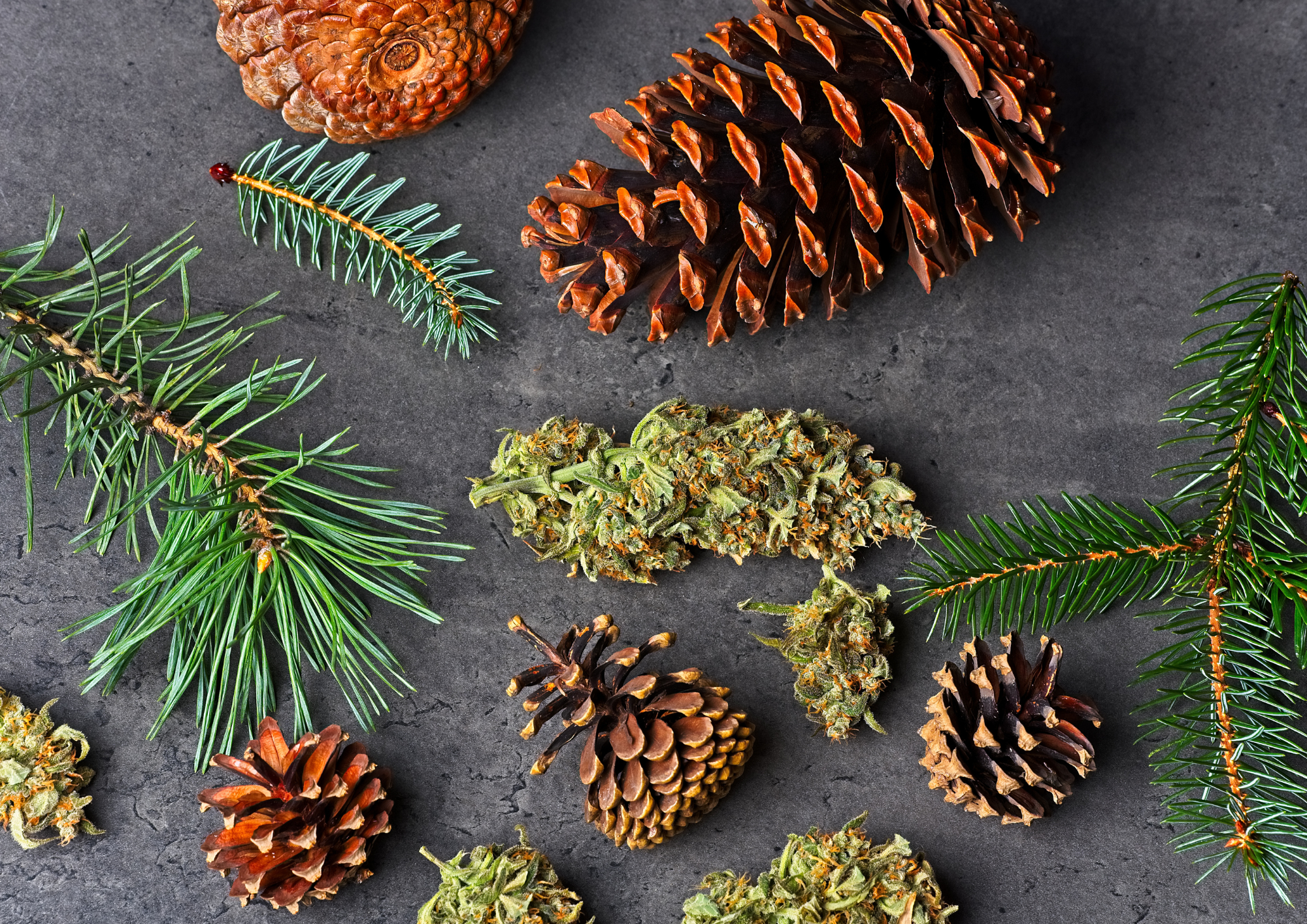
Terpenes are the aromatic molecules present and responsible for the perfume of each specific plant species. Specifically for this reason, companies use the isolated terpenes to create aromas which have then application in numerous industries, from food to cosmetics.
In plants the terpenes play a key role in reproduction, defence, and protection: in some cases, in fact, they attract pollinating insects, in others, on the contrary, repulse parasites or vermins or intervene to stem the damage caused by external factors, germs at the top of the list.
Their value, though, isn’t limited just to plants. As in the case of cannabinoids, even terpenes can have beneficial effects on the human body, especially when the entourage effect is initiated. But which terpenes can be found in Cannabis? And what are the effects on our body?
Cannabis’ terpenes
As happens in other plants, Cannabis too contains a variety of terpenes. Among the leading ones we have limonene, linalool, myrcene, pinene, humulene, and β-caryophyllene. Here are further details and their effects on the human body.
Limonene
Limonene is a terpene very common in the plant world and it can be easily recognised thanks to its distinguished citrusy aroma (it can be found, in fact, in lemons and oranges).
Based on recent studies, like the one published on Chemico-Biological Interactions, limonene would have an influence on the behaviour of certain immunitary cells and anti-inflammatory, antioxidanty, anti-viral, anti-diabetic and anti-tumoral effects.
Linalool
Present in great quantities in lavender, linalool is a very floral aromatic terpene, it’s one of the main aromas used in aromatherapy. Its secret lies in its relaxing effects, to which we can add anti-inflammatory, anti-microbiotic, neuroprotective, anti-depressive, anti-tumoral and anti-anxiety effects.
Myrcene
Myrcene is a terpene commonly found in hops, thyme and lemongrass, as well as in Cannabis.
Already familiar for its antioxidant properties, based on recent studies (as the one published on Neurochemical Research) myrcene could help in protecting the brain cells from oxidative damage, especially the ones occurring after an ictus, and it could contribute to the health of damaged heart tissue after ischemic strokes.
And it doesn’t end there, this particular terpene seems to have anti-inflammatory effects and it may prevent the breakage of some cartilage cells, an aspect that would make it useful in cases of arthritis.
Pinene
Pinene is known for its fresh perfume, it’s another terpene very common in nature and it can be found in pine needles, but also in rosemary and basil.
Thanks to its anti-inflammatory properties, it can contribute, if inhaled, in fighting some bacteria, but not only: acting as a bronchodilator, it allows a greater flow of oxygen in the lungs.
Humulene
It’s the main terpene in hops and can be found in ginger and cloves too, the humulene could help in fighting asthma and allergic reactions, in particular the ones affecting the respiratory tract.
Beta caryophyllene
Present also in black pepper and cloves, the beta caryophyllene, such as other terpenes, is renowned for its anti-inflammatory and pain-relief effects. Specifically, based on the study available on European Neuropsychofarmacology, it would have benefits on the nervous system, and become a great ally in treating chronic pain.

